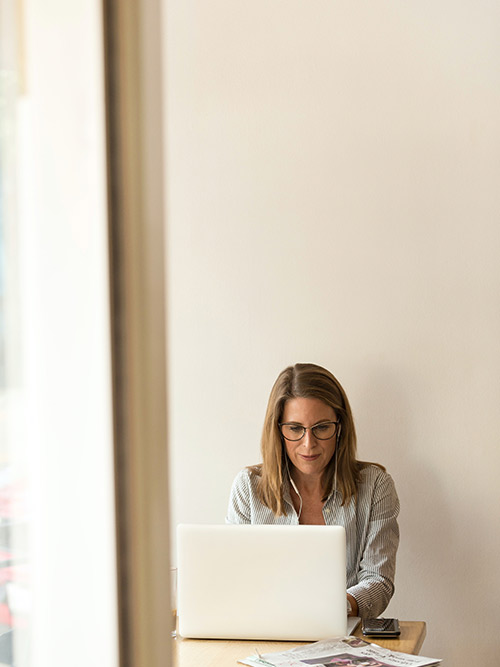- Introducing Our Fractional Coworking Executive Service: Transform Underutilized Office Spaces into High-Occupancy, Revenue-Generating Assets - September 26, 2024
- Community Manager 3.0: Why Your Space May Need a Coworking Executive - December 14, 2023
- The Unseen Discriminatory Factors of a Mandated RTO Policy - November 8, 2023
It is crucial to recognize how your users will utilize the space, as this knowledge allows you to create an environment that fosters productivity and satisfaction for your customers.
In this article, we will introduce you to five distinct personas: the Freelancer, the Startup Team, the Remote Corporate Employee, the Consultant, and the Non-Profit Organization Leader.
By analyzing their unique needs and preferences, we will demonstrate the importance of visualizing how end users will interact with and benefit from your coworking space.
With a clear understanding of these personas, you will be better equipped to design a space that caters to the diverse requirements of your members, ensuring a seamless and enjoyable experience. By focusing on the member experience and optimizing the physical space, you will create a strong foundation for a thriving coworking community that drives growth and customer satisfaction.
What are Coworking User Stories and Member Experience Design?
Coworking user stories are narrative descriptions of how different types of users or members interact with a coworking space.
- These stories outline their goals, preferences, and needs, helping operators and designers understand the unique requirements of each persona.
- User stories provide valuable insights into how to design coworking spaces that cater to different user types, creating a personalized experience that meets and exceeds their expectations.
Member experience design, on the other hand, is a holistic approach to crafting the overall experience of users in a coworking space.
- This process involves understanding the user’s journey from entering the space to utilizing various facilities, engaging with other members, and accessing additional services.
- By focusing on member experience design, coworking operators and real estate developers can create environments that are not only functional but also welcoming, inspiring, and conducive to productivity.
Incorporating both coworking user stories and member experience design into the planning and development of your coworking space ensures that the end result is a well-rounded, user-centric environment. By taking into consideration the unique preferences and needs of each persona, you can create spaces that resonate with your target audience and foster a strong sense of community and collaboration.

Use Case 1: The Freelancer
Riley, a freelance graphic designer, was always on the lookout for a comfortable and inspiring place to work. He found the perfect coworking space that catered to his needs. Upon arriving, Riley was greeted warmly at the reception area and was shown around the space.
Riley chose to use a hot desk, which allowed him to work in different parts of the space depending on his mood. Some days, he preferred the open, airy environment of the lounge area, while other days, he opted for the quiet ambiance of a work booth to focus on their projects. The coworking space provided reliable Wi-Fi, making it easy for Riley to communicate with clients and collaborate with other professionals.
When Riley needed to meet with clients or conduct video calls, he booked a conference room or a Zoom room, which provided the necessary privacy and professionalism. During breaks, he enjoyed socializing with other freelancers and entrepreneurs in the kitchen space or the coffee shop, which also served as a great opportunity to network.

Use Case 2: The Startup Team
A small tech startup, consisting of five members, needed a flexible workspace to grow their business. They found a coworking space that offered dedicated desks and private offices to suit their needs. The team started by using dedicated desks, which allowed them to have a consistent workspace while also being part of a larger community.
As their business grew, they moved into a private office within the coworking space, giving them a more secluded area to focus on their work. The team frequently utilized the huddle spaces for brainstorming sessions and the training and learning rooms for workshops and presentations.
When they needed to unwind, they took advantage of the wellness room, where they practiced yoga or meditation. The startup team appreciated the sense of community and the opportunities for collaboration that the coworking space provided.

Use Case 3: The Remote Corporate Employee
Emma, a remote employee for a large corporation, needed a professional workspace away from home. She decided to join a coworking space that offered a variety of working environments. Emma typically worked at a dedicated desk, where she had a comfortable, ergonomic setup for her long hours on the computer.
When she needed to make private phone calls, she used the phone booths, which provided a soundproof space for her conversations. For team meetings, she reserved a conference room or a Zoom room, ensuring that she had a professional backdrop for her video conferences.
During her breaks, Emma enjoyed spending time in the lounge or living room space, where she could relax and chat with other coworkers. She also appreciated the opportunity to participate in events and workshops held in the training and learning rooms, which helped her to stay connected with the latest industry trends and expand her professional network.

Use Case 4: The Consultant
Daniel, a business consultant, frequently traveled to different cities to meet with clients and work on projects. He found coworking spaces to be the perfect solution for his ever-changing work locations. When Daniel arrived at a new city, he would choose a coworking space close to his client’s office or his accommodation.
He often opted for a dedicated desk, providing him with a stable and professional workspace to prepare for meetings and complete project-related tasks. Daniel appreciated the conference rooms and Zoom rooms, which allowed him to conduct meetings with clients and remotely collaborate with his team in a polished and professional setting.
During his downtime, Daniel enjoyed networking with other professionals in the kitchen space or the coffee shop, expanding his connections and sometimes even finding new business opportunities. The coworking spaces he frequented served as a hub of inspiration, providing Daniel with the tools and environment he needed to succeed in his consulting career.
Use Case 5: The Non-Profit Organization Leader

Sophia, the director of a small non-profit organization, was looking for an affordable and flexible workspace for her team. She discovered a coworking space that offered various options to accommodate her organization’s needs. Sophia and her team used dedicated desks, which provided them with a consistent workspace and access to a larger community of professionals.
When planning fundraisers or board meetings, Sophia booked conference rooms or huddle spaces, which were perfect for brainstorming, strategizing, and organizing events. The training and learning rooms were invaluable for hosting workshops or seminars aimed at raising awareness about her organization’s cause.
Sophia and her team appreciated the supportive and collaborative atmosphere that the coworking space provided. They were able to network with other professionals, exchange ideas, and even forge partnerships that furthered their non-profit’s mission. The coworking space’s flexible and diverse environment played an essential role in their organization’s growth and success.
Understanding your members and their diverse needs is fundamental to the success of a coworking space.
By delving into various user personas, such as the Freelancer, Startup Team, Remote Corporate Employee, Consultant, and Non-Profit Organization Leader, coworking operators and real estate developers can design spaces that cater to the unique requirements of each user type. This not only enhances the overall member experience but also strengthens the value proposition of your business.
As consultants, we recognize the importance of user stories, market research, and customer experience design in crafting coworking spaces that resonate with the target audience. By focusing on the needs of each persona and personalizing work environments accordingly, we can create spaces that foster productivity, collaboration, and a sense of community. This comprehensive approach ultimately drives growth and customer satisfaction, positioning your coworking space for long-term success.
